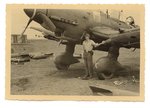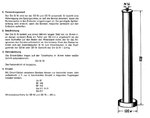I remember from Vietnam the air force would put pipes extensions on the front of some 250-500- and 750 lb bombs, it had a the forward fuse on it, which would be a zero delay fuse. The idea was for the bomb to go off above the ground, much cheaper than doing the same thing with a radar ranging fuse. We called them daisy cutters.
On some drawings of a Stuka I notice some bombs that look similiar, in German it's labeled " dienartstab" . Translation please.
Looks like we copied another German weapons idea.
On some drawings of a Stuka I notice some bombs that look similiar, in German it's labeled " dienartstab" . Translation please.
Looks like we copied another German weapons idea.
Last edited:



